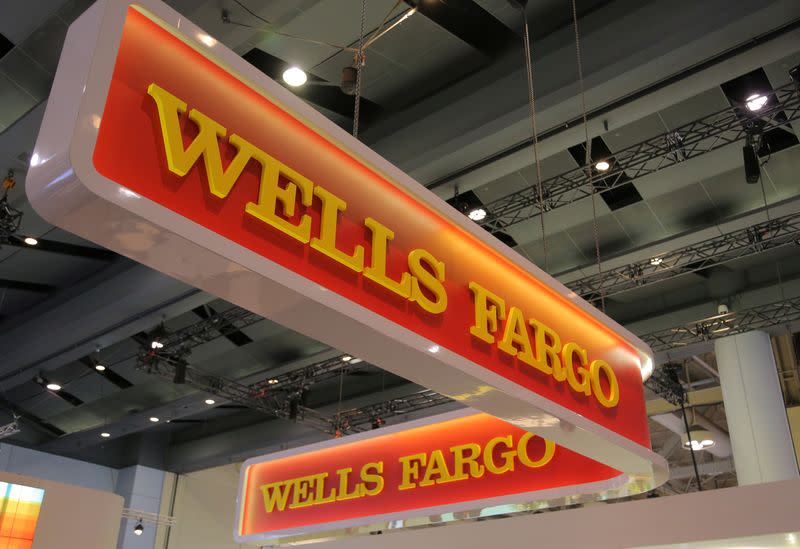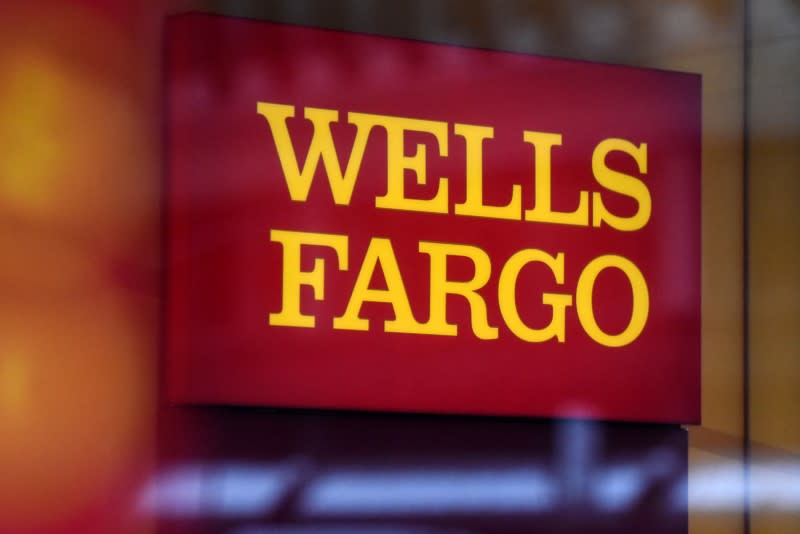Wells Fargo's new chief pledges more cost cuts as profit slumps
By Imani Moise and Noor Zainab Hussain
(Reuters) - Wells Fargo & Co's <WFC.N> profit slumped 55% in the fourth quarter as new boss Charles Scharf set aside another $1.5 billion for legal costs related to the bank's sales scandal and promised "fundamental changes."
The bank racked up operational losses of $1.9 billion in the final quarter of the year, partly for reserves to cover pending litigation related to its fake-account scandal that erupted more than three years ago.
Wells Fargo, the fourth-largest U.S. lender by assets, has leaned on cost cuts to stabilize its bottom line while its revenue growth has been sluggish. However, a raft of fines and costs relating to sales abuses first uncovered in 2016 have been hard to control.
Scharf said the bank's cost structure is simply too high, and pledged to improve performance once he gets through regulatory issues that need attention.
"There is no reason why we shouldn't have best-in-class efficiency with these businesses at this scale, and that ultimately will be our goal," the new chief executive said on a call with analysts.
He declined to give specific targets or a time frame for reaching them.
Wells Fargo shares fell about 4% to $50.01.
Cost-cutting was also a cornerstone of former CEO Tim Sloan's recovery plan, but the bank acknowledged last year that technology and compliance costs would remain high as it tried to satisfy regulators.
Wells Fargo's non-interest expenses jumped 17% in the fourth quarter compared with the year-earlier period, due to the litigation costs, as well as higher compensation expenses.
It spent 78.6 cents for every dollar of revenue it generated, up from 63.6 cents a year earlier, and far above Sloan's targeted range of 55-59 cents per dollar, or rival JPMorgan Chase & Co's <JPM.N> 55.9 cents.
Investors watch that ratio closely to determine how well a company manages expenses.
Wells is operating under heavy scrutiny as it tries to rebuild its reputation, including an unprecedented cap on its balance sheet by the Federal Reserve and frequent criticism from prominent U.S. politicians.
Its problems began to unfold in September 2016, when the bank revealed that employees had opened potentially millions of bogus accounts in customers' names without their permission to hit sales targets set by management. Since then, Wells Fargo has found other problematic practices that cost customers money or otherwise harmed their financial well-being.
Scharf is the fourth CEO in place since that time, and investors are hopeful he can finally get his arms around the problems.
Although the bank has reached settlements with some regulators and private parties, there are still outstanding probes by U.S. authorities, including the Department of Justice and the Securities and Exchange Commission. It also operates under consent orders with regulators, as well as the Fed's asset cap.
Scharf would not provide guidance on when Wells Fargo might resolve its regulatory issues.
Wells Fargo's profit fell to $2.55 billion, or 60 cents per share, in the fourth quarter, from $5.71 billion, or $1.21 per share, a year earlier.
Its adjusted earnings of 93 cents per share compared with analyst estimates of $1.12, on average, according to Refinitiv. Revenue of $19.86 billion came in below expectations of $20.12 billion.
The bank's net interest income fell 11% as the Fed lowered interest rates three times last year to support the economy.
However, its mortgage business benefited from lower rates, with income rising to $783 million from $467 million.
Wells Fargo also continued to add deposits in the most recent quarter, with interest expense linked to deposits jumping 17%.
(Reporting by Noor Zainab Hussain in Bangalore and Imani Moise in New York; Editing by Sriraj Kalluvila and Nick Zieminski)



